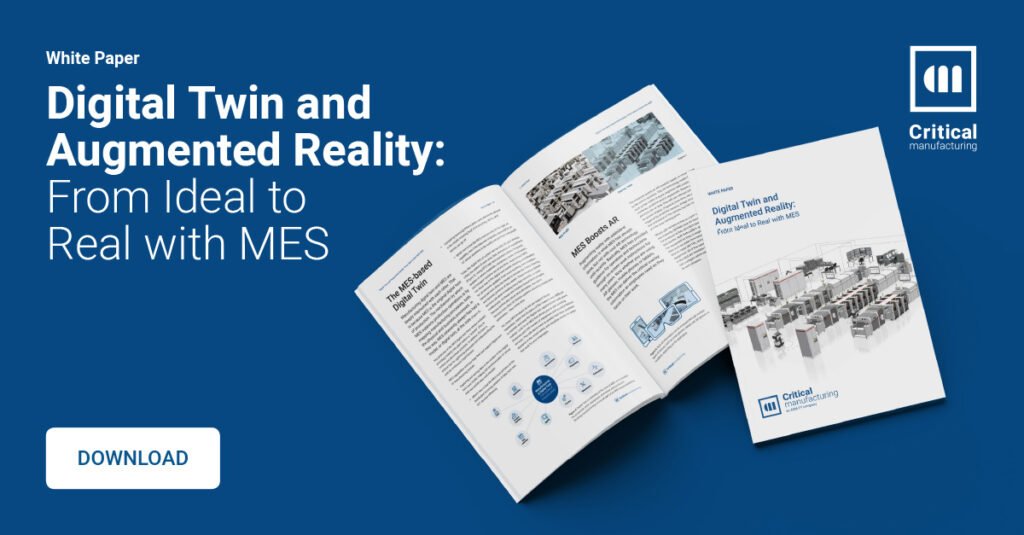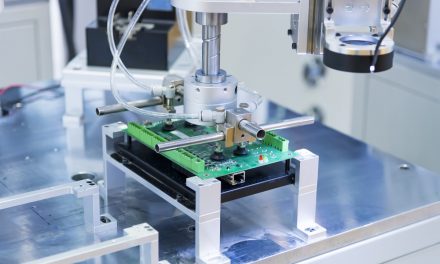The Evolutionary Path to a Robust Digital Twin

By Francisco Almada Lobo, Critical Manufacturing
Amidst the excitement of Industry 4.0, always fertile in new concepts and trends, it has become increasingly common for a supposed new type of application to appear, provided by vendors and consultants, the digital twins.

But as Bart Simpson already realized, it is a concept, not an application, and definitely not a shortcut to achieving smart manufacturing benefits. Unfortunately, it is necessary to understand that the path to I4.0 is a path of sophistication, but also of maturity.
The digital twin is, in essence, a timeless concept rooted in the fundamentals of mirroring reality. It transcends being merely a technological construct; it’s an enduring idea, continuously reimagined and reshaped by evolving technologies. In fact, this conceptual nature of the digital twin allows it to adapt and integrate with each new technological advancement, making it as relevant today as it will be in the future.
The Genesis and Evolution of the Digital Twin
The journey of the digital twin, a concept innovated by Dr. Michael Grieves in the early 2000s, began as a fundamental idea in product lifecycle management. Initially, digital twins in manufacturing served as basic virtual models, offering static representations of products or processes. These early iterations were crucial stepping stones, laying the groundwork for what was to become a pivotal tool in industrial innovation.

Dr, Michael Grieves, The American Society of Mechanical Engineers
The MES: The First Digital Twin
Without wanting to go into detail about all the functions and characteristics of MES systems, it is important to understand it in this context as a milestone in the broader concept of digital twin. MES is in fact a first form of digital twin for itself, which comes closer to its twin full potential the more sophisticated it is and the more data sources it integrates.
The integration of Manufacturing Execution Systems (MES) marked a significant evolution in the digital twin’s journey as they brought context and narrative to the manufacturing floor, transforming raw data into actionable insights and patterns. This was the first layer of depth, turning the digital twin into a dynamic and insightful tool.
IoT Data Platforms: Expanding the Horizon
The addition of an IoT data platform is where things get truly exciting. IoT platforms bring in real-time operational data from a plethora of sensors and devices. This integration allows the digital twin to not just mirror the production process but also to monitor machine performance, environmental conditions, and other critical manufacturing variables.
The twin transitions from being a mere reflective model to an analytical tool, capable of offering predictive insights and enabling proactive decision-making.
Towards the Ideal Manufacturing Digital Twin
As the expression “Expanding the Horizon” makes clear, data platforms do not replace MES systems, but instead add value to them.
Although the introduction of IoT data platforms opened a new realm of possibilities, they encompass a major challenge: the lack of data contextualization. The analysis that is possible to be carried out using simply sensor data obviously falls far short of its full potential, as it lacks information on machines, products, recipes or programs, process parameters, etc.
But what is critical (no pun intended) to understand is that while these platforms provide extensive real-time operational data, they require the contextualization that MES can provide. As such, the combination of IoT data with MES insights enriched the data, allowing for a more nuanced and comprehensive understanding of manufacturing processes.
As MES and IoT data platforms converge, we take another step towards a more realistic and value-added manufacturing digital twin. This combination has the potential of translating into a predictive, decision-making tool that leverages the contextual richness of MES and the extensive data capabilities of IoT platforms.
Another important layer of the digital twins in the visualization, which has had a quite impressive improvement over the past years. The 3D visualization tools play a pivotal role in enhancing the functionality and effectiveness of digital twins as they bring them to life by providing a realistic, detailed representation of physical assets and processes. This realism aids in better understanding complex systems, making it easier for engineers, designers, and decision-makers to interact with and comprehend intricate details.

Twinzo 3D Digital Twin of Electronics SMT lines from ASMPT
The Future: Continuous Integration and Expansion
Yet, the journey towards the ultimate manufacturing digital twin continues.
On the one hand, the creation of a twin should allow running simulations to assess new operation points with improved performance. On the other hand, the full system digital can only be achieved with full product digital twins, beyond the manufacturing process ones, creating the full system twin.
Therefore, the integration of more layers – advanced simulations, product lifecycle data, supply chain dynamics – will further enhance our ability to predict, adapt, and optimize manufacturing processes.
But first what comes first. The digital twin is a concept, and for achieving it in manufacturing we need to seize the evolution and synergetic combination of MES, Data Platforms and additional applications.
Most of the times, these are still perceived as separate applications with different philosophies and purposes, and therefore we are still in the early stages of harnessing the potential achievable with the combination of these solutions. More than vendors or products, we need to apply intelligence to this challenge.













